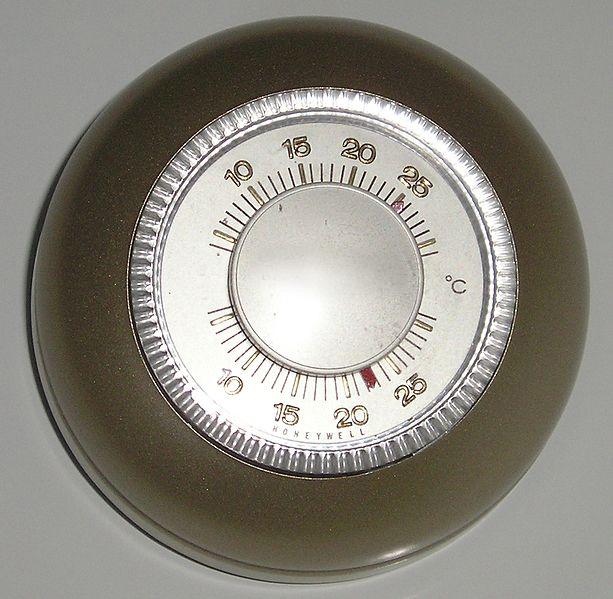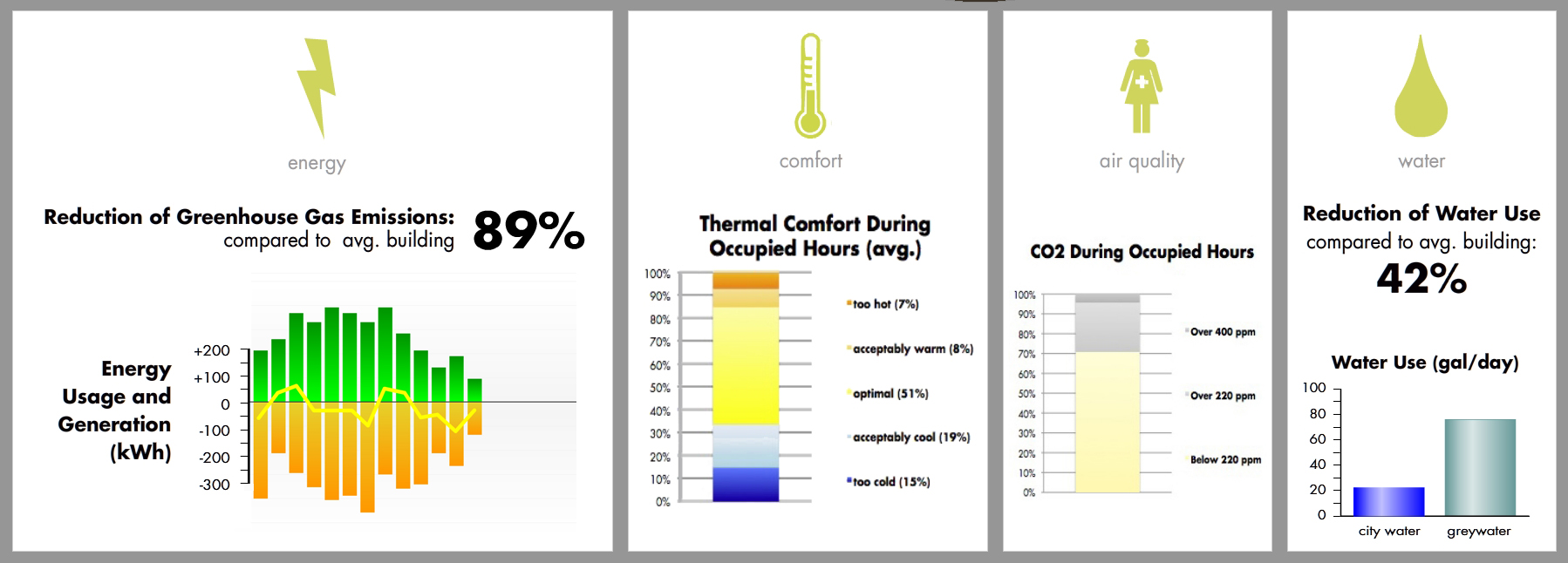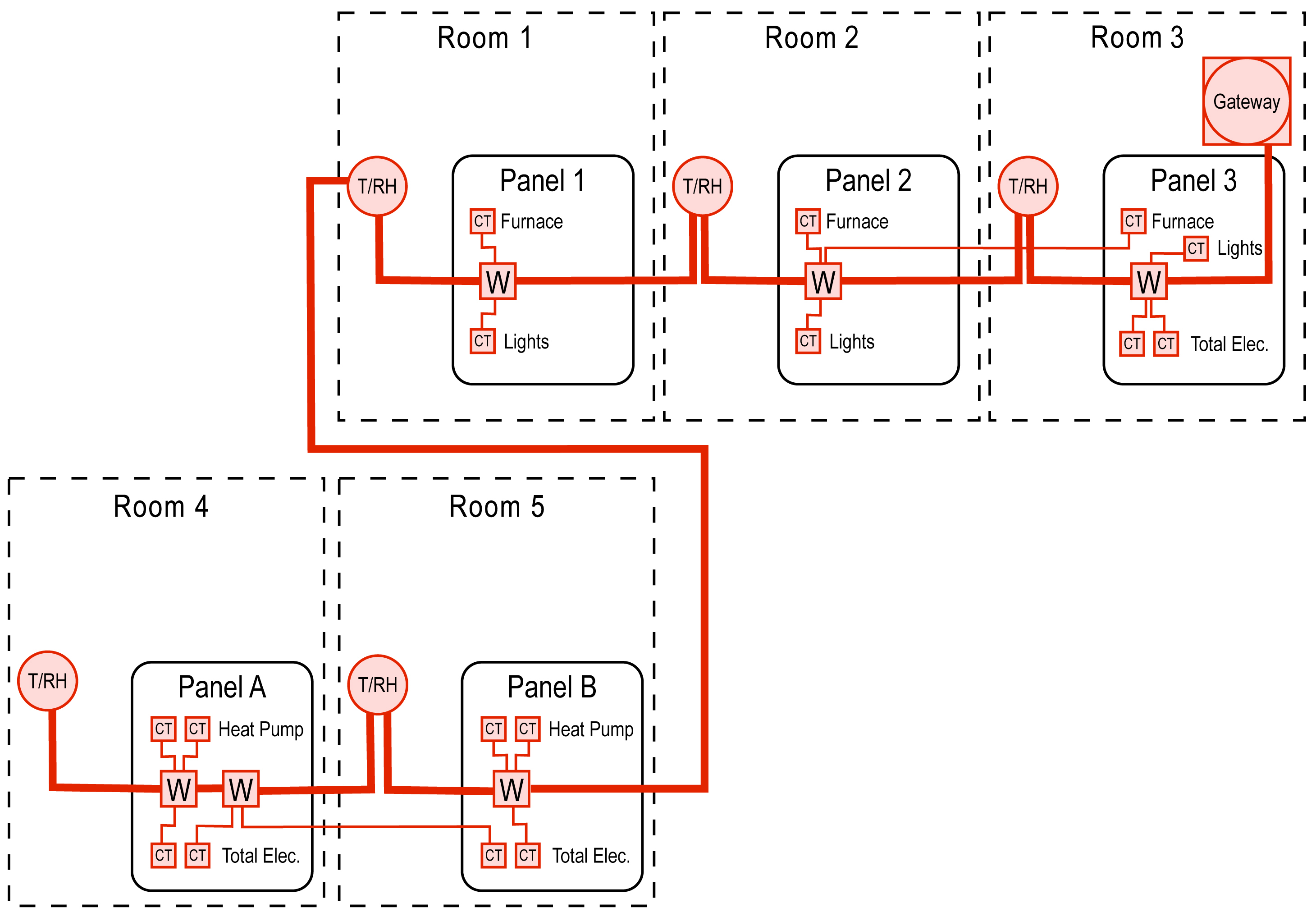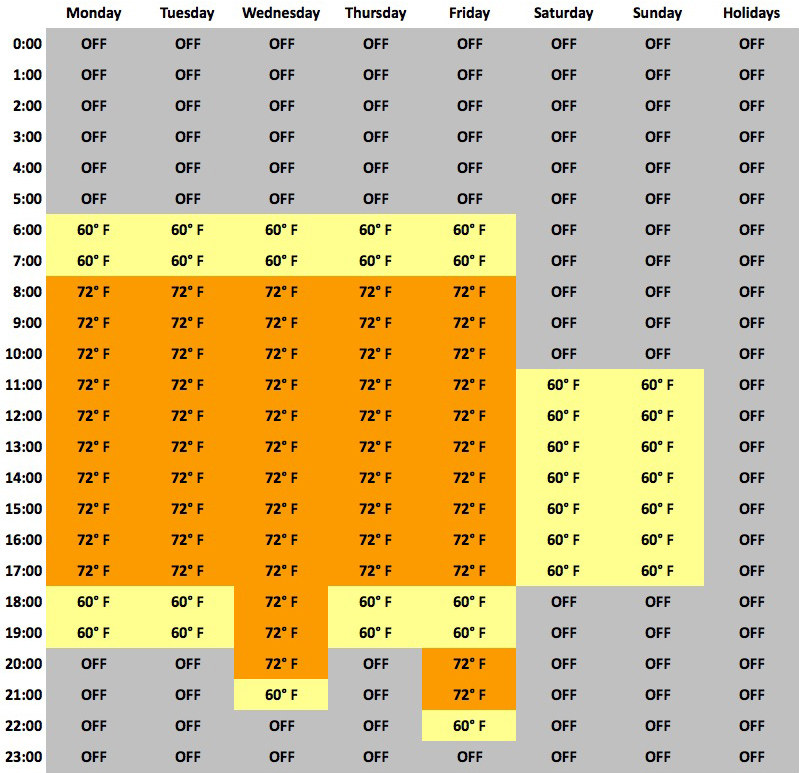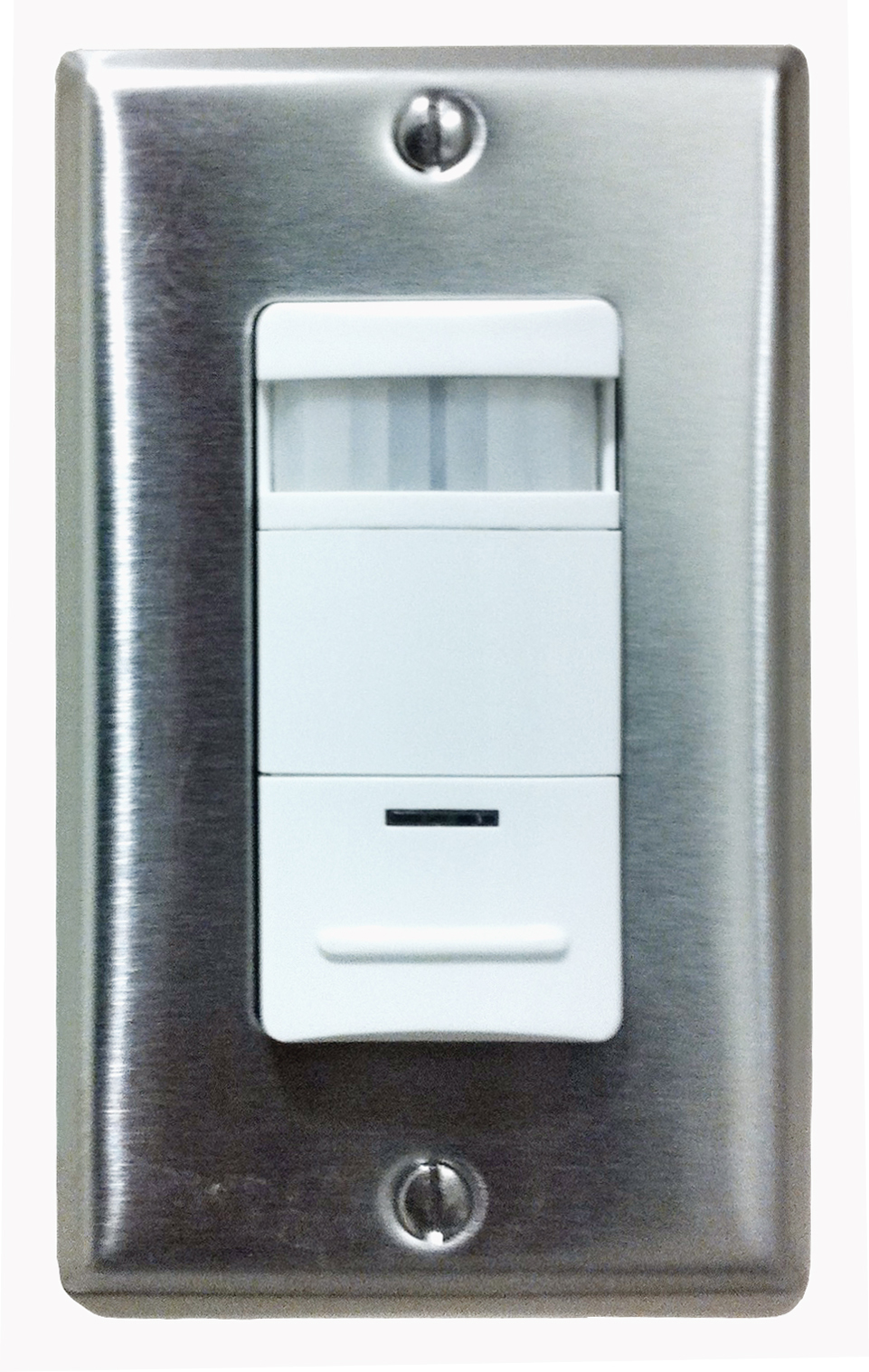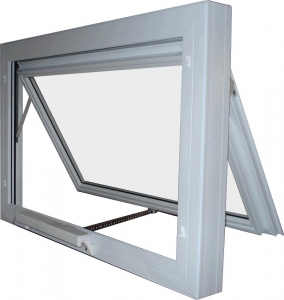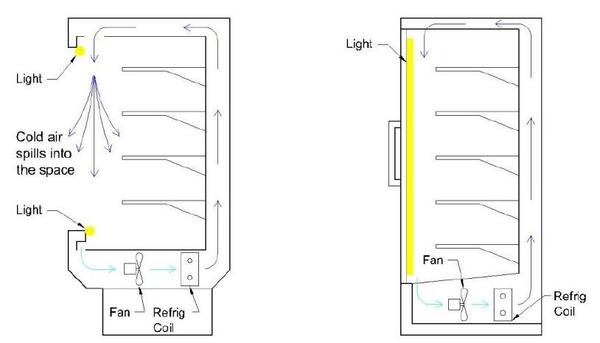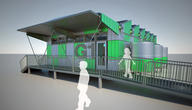You are here
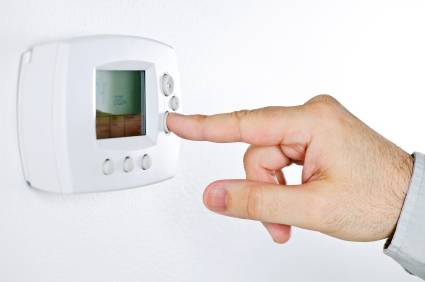
Controls for thermal comfort are sensors and controllers, such as thermostats, humidistats, mechanized blinds, mechanized windows or ventilation openings, and any other building automation systems that keep occupied spaces within comfortable temperature and humidity values.
Such systems may be individual controllers for different products or different systems within a building, or they may comprise a single system that unifies all sensors and controllers. Such unified systems may also integrate controls for lighting, indoor air quality, water, and other systems.
A simple thermostat vs. a holistic building energy management system dashboard
Building occupants usually don't have the time, attention, or engineering knowledge to optimize a building's thermal systems for comfort at all times. The more sophisticated a building's response is to changing heating and cooling needs, the more important it is to have automated systems. The difference between having good HVAC automation and bad automation can be a 5 - 15% energy savings, and sometimes even double that.
Moreover, several efficiency-improving HVAC strategies Variable Air Volume fans and Demand-Controlled Ventilation require control systems in order to function. Demand-Control ventilation by itself can save up to 15% of HVAC energy.
Good control systems are measured by the amount of energy they can save while still providing optimal thermal comfort, with the least cost and hassle of operation.
Basic and Advanced Systems
Simple control systems may have as little as one temperature sensor operating one furnace or heat pump. In such cases other components, such as fans to push heat through a building by forced air, simply switch on and off with the heating or cooling unit.
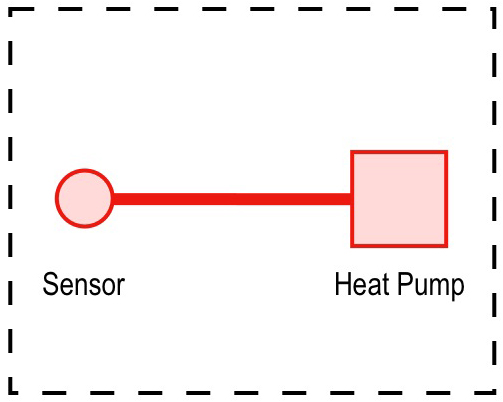
The simplest control system
Sophisticated systems that integrate several devices can turn individual components on and off separately, and can have them operate at less than full power. For instance, an economizer may turn on fans without turning on the air conditioner, or multiple temperature sensors might adjust dampers in different zones to provide one location with 100% heated air while another location only receives 30% heated air.
A more complex control system
The advantage of complex systems is that they can control building systems more holistically, ensuring all components work together. The disadvantage of such systems is that they can be difficult to understand and use. If the control system is too difficult to operate, it will not be used properly, and HVAC systems will operate inefficiently.
Systems that involve humidity controls as well as temperature controls can better optimize comfort while saving energy. For instance, on a warm humid day, a control system might keep people comfortable by turning on a desiccant dehumidifier instead of the air conditioner, while on a hot dry day the control system might run the air conditioner without dehumidifying.
System integration is key to a reliable and easy-to-manage automation system. Literally hundreds of companies provide sensing and controls equipment, software, and services. However, a surprisingly large amount of time can be spent getting components to work well together. Many enterprises, and even some individuals, still find it preferable to make their own systems largely from scratch.
At their most sophisticated, building automation systems can perform Automated Continuous Commissioning, constantly optimizing the performance of all systems and alerting operational staff when components need maintenance or repairs.
Predicting Needs
One important aspect of thermal control systems is predicting when rooms need to be certain temperatures, when it matters less, and when it doesn't matter at all. Predictable occupancy and activity schedules help this. Some control systems use advanced artificial intelligence to predict people's needs.
Advanced control systems allow scheduling
When occupancy is less predictable, occupancy sensors can be used to determine whether anyone is around to enjoy the temperature of the room.
A typical occupancy sensor
For spaces with significant thermal mass, it can take a long time for temperatures to rise or fall, so rooms should be pre-heated or pre-cooled. Here again, predictable occupancy and activity schedules are useful.
If predictability is not possible, remote mobile apps or web-based controls can be used so that people can turn on heating or cooling systems before they arrive in the building.
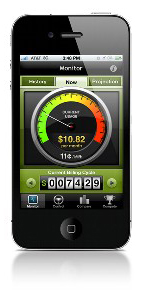
Mobile apps can allow remote activation of building energy systems
Combining Active and Passive Systems
Maximum energy savings require maximum use of passive heating and cooling. However, traditional thermal control systems only use HVAC equipment to heat and cool. Advanced systems can combine the two by making passive systems actively controlled.
Passive systems can be actively controlled by motorizing components that need to move, such as windows, skylights, ventilation louvers, or shades. Their contributions may be less predictable than HVAC units, but good feedback loops can manage this.
Window with motorized opening and closing mechanism
For instance, opening some windows and a skylight to cool a building will cool more or less depending on how cool it is outside and how much the wind is blowing. But if the control system monitors temperature changes well, it can still operate the windows and skylight as if they were an air conditioner. When more cooling is needed, they can be opened more; when less cooling is needed, they can be opened less or closed entirely.
A particularly smart system might see that the windows and skylight do not cool the building enough no matter how far they are open, and then switch modes to seal the building up and switch on an HVAC air conditioner instead.

